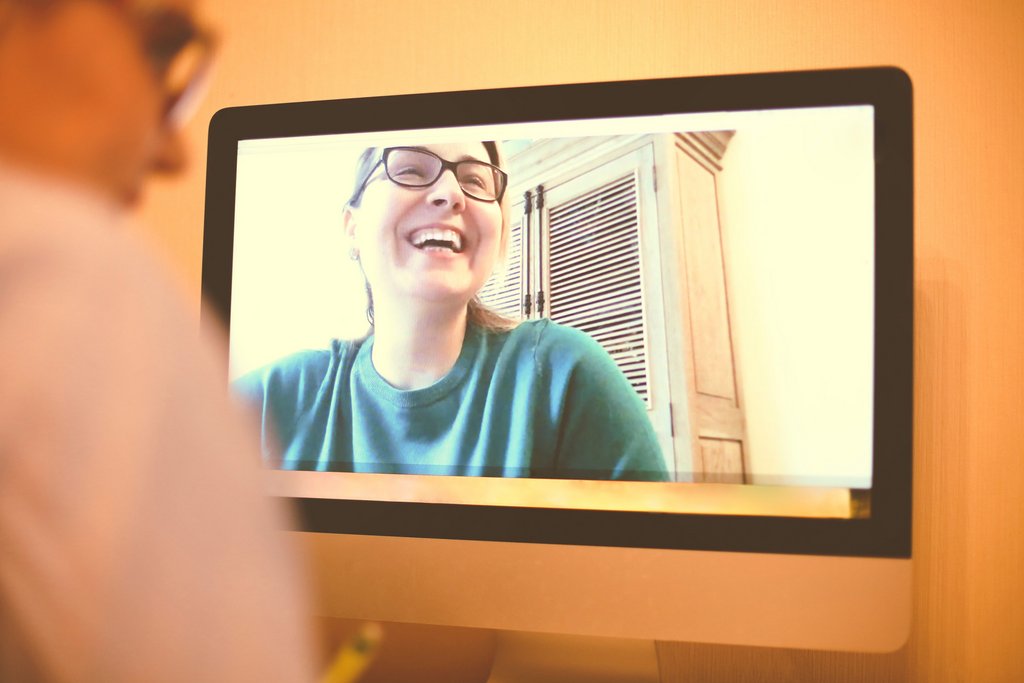Background - 16.10.2025 - 09:53
You’re nervous. Your knees are weak, and your palms are sweaty. No, this is not an Eminem song 😉 –you’re preparing for your big job interview. You remind yourself that these are totally normal feelings. You are qualified and prepared. Plus, you hope your sharp wit can win over the interviewer, as it has in previous interviews.
As the interview commences, you crack a joke to help break the ice. In the past, you’ve used humor to deepen relationships and defuse stressful situations with people you knew well. So, sharing a laugh might also be able to create a quick connection and reduce anxiety between you and the interviewer who were total strangers until now. After all, humor can swiftly win over hearts and minds, right?
If your interview is online—as they increasingly are these days—you might want to (re)consider your strategy. After all, the lack of interpersonal cues paired with digital records (e.g., transcriptions) in these settings can increase anxiety, making it harder to land a joke. And, of course, digital records show that some jokes just don’t age well…
But like the Swiss flag, appropriate humor in professional settings is often a big plus! 😉 So, in the following, we review digital humor in science and practice.
Paradoxically, workplace humor may be becoming more necessary–but also more risky. After all, humor can bring people together, enhance trust, and team performance, which are all critical qualities of diverse, agile, and global teams. But when a joke falls flat, joke-tellers are viewed as more confident but less intelligent. After all, they must have misread the room or the people in it to have received crickets instead of chuckles, right?
There are many reasons a joke might fall flat (i.e., they’re deemed unfunny, no one laughs) ranging from poor delivery to poor taste. Given the growing diversity of employees and global organizations, failed humor might also be the result of a lack of implicit knowledge or language nuances necessary to understand the joke. And of course, we all know it’s not funny if you have to explain it, because as you explain the details and your intent, you’ve completely lost the spontaneity and surprise that’s the critical recipe for crafting humor… Maybe now you see what we mean? 😉
If only a few folks get the joke, then the positive effects on cohesion, trust, and performance may be even stronger for the in-group. But by its nature, these “inside jokes” also create “outsiders,” undermining group dynamics and the potentially powerful, positive effects of humor. If the interaction was digital, there may be looser norms of conduct, ambiguity from a lack of cues—as well as that enduring recording (e.g., Zoom transcript, Whatsapp message)—all of which can also undermine humor’s positive effects.
As we can all attest, emails remain a staple of our digital communications at work. But surprisingly, recent analyses of thousands of emails reveal humor in only 10% of emails—less than in face-to-face interactions. Besides emails, specific parts of digital messages like emojis can also be used in humorous ways or to accentuate humor (e.g., with a 😉 or a 🤣), conveying emotion and intent.
But despite their broad usage and potential power, humor in digital spaces is still far too sparse. For emojis, generational divides may contribute to confusion about what they mean, and how to use them. Even prominent business school professors argue that the meagre 10% of humorous emails should be higher, too. (While emails, emojis, and the previously mentioned jokes in virtual interviews are not the only ways to be funny in digital spaces, technical limitations prevent analyzing other forms of digital humor [e.g., speech and memes]--which machine learning can overcome in the near future.) But for humor more broadly, employees fare worse with failed jokes than if they’d been serious from the start. So, it could be that the sheer risks of failed humor in digital spaces might simply seem daunting, contributing to their underuse.
So, how can we wield humor more prolifically, powerfully, and purposefully in digital spaces?
As digital spaces and tools are increasingly used for professional purposes, humor remains a staple of collegial exchange, communication, and beyond. But especially because humor remains uniquely human (no, not even ChatGPT poses a threat here… yet), there’s still untapped potential when it comes to digital humor. So, with these tips in mind, we can wieldhumor more prolifically, purposefully, and more carefully in digital spaces to maximize its benefits while minimizing its potential to be risky—or risqué.
The Authors
Jamie Gloor is an Assistant Professor at the University of St.Gallen’s School of Management. Passionate about leadership, diversity & inclusion, humor, sustainability, and the future of work/leadership, she can (and did!) deliver a TEDx talk on the topics (see here).
Cecily Cooper is a Professor of Management at the University of Miami. Her research interests include humor, interpersonal trust, trust violation and repair dynamics, and political ideology in organizations.
More articles from the same category
This could also be of interest to you
Discover our special topics
